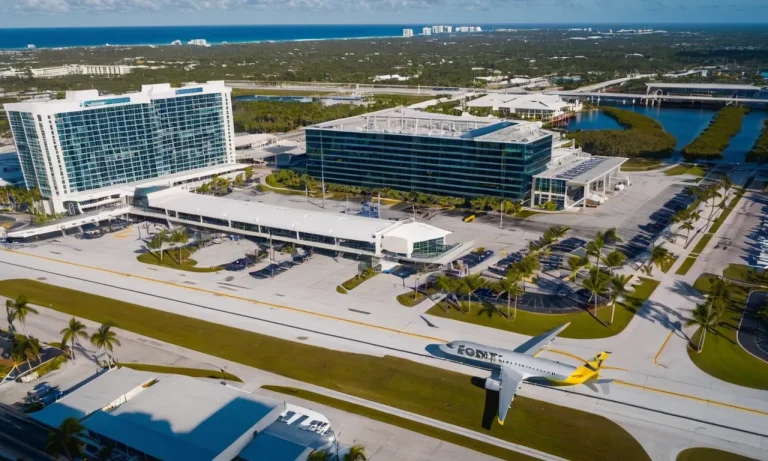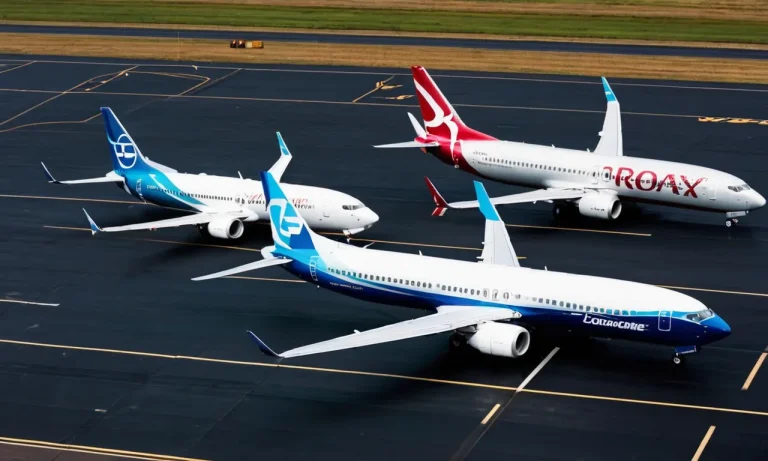How Long Is The Drive To Canada: A Complete Guide
If you’re planning a road trip up north to the Great White North, you may be wondering – just how long is that drive to Canada going to take me? That depends greatly on where in Canada you’re hoping to visit and where in the United States your journey will originate.
If you’re short on time, here’s a quick answer to your question: From major U.S. cities like New York, Boston, Chicago, Seattle and Detroit, expect a drive time to the nearest Canadian border of 6 to 12 hours one way.
In this comprehensive guide, we’ll walk you through drive times to Canada’s most popular destinations like Toronto, Montreal, Vancouver and beyond from various starting points across the U.S. Read on for routes, mileage, estimated drive times broken down by origin city, must-see roadside attractions en route and safe driving tips for your northbound road trip.
Driving Times to Canada from East Coast U.S. Cities
Boston to Montreal
If you’re planning a road trip from Boston to Montreal, you’re in for a scenic drive through beautiful New England and the stunning landscapes of Quebec. The distance between these two vibrant cities is approximately 320 miles, and the average driving time is around 5 to 6 hours, depending on traffic conditions and your chosen route.
Keep in mind that crossing the U.S.-Canada border may add some time to your journey, so be sure to have all your necessary documents ready. It’s also worth noting that the drive from Boston to Montreal offers plenty of opportunities to stop and explore charming towns along the way, such as Burlington in Vermont or Montpelier, the capital of Vermont.
New York City to Toronto
The drive from the bustling streets of New York City to the vibrant city of Toronto is an exciting adventure that spans approximately 550 miles. With an average driving time of around 8 to 9 hours, this road trip allows you to experience the diverse landscapes of both the United States and Canada.
As you make your way from the Big Apple to the Great White North, you’ll pass through picturesque regions such as the Finger Lakes in New York and the stunning Niagara Falls. Remember to plan your journey well, as traffic can be heavy at times, especially around major cities like New York City and Toronto.
Don’t forget to make some time for a detour to Niagara Falls – a must-visit attraction along the way!
Philadelphia to Toronto
If you’re starting your journey from Philadelphia and heading to Toronto, get ready for an approximately 450-mile drive that usually takes around 7 to 8 hours. As you travel through the scenic countryside, you’ll have the opportunity to appreciate the beauty of Pennsylvania’s rolling hills and New York’s picturesque landscapes.
Along the way, consider making a stop at the beautiful city of Rochester or exploring the charming towns of the Finger Lakes region. Once you reach Toronto, you’ll be greeted with a vibrant city filled with cultural diversity and countless attractions to explore.
Planning for a road trip to Canada from the East Coast can be an exciting adventure. Remember to check for any travel advisories or restrictions before you embark on your journey. It’s also a good idea to have a GPS or map handy and ensure you have proper documentation, including passports or other required travel documents.
Safe travels!
Drive Times from Midwest and Great Lakes Cities to Canada
For those planning a road trip from the Midwest or Great Lakes region to Canada, it’s important to consider the drive times to various Canadian cities. Here, we’ll explore the estimated drive times from three major cities in the region to Toronto, one of Canada’s most popular destinations.
Chicago to Toronto
If you’re starting your journey from Chicago, you’ll be pleased to know that the drive to Toronto is relatively straightforward and offers some beautiful scenery along the way. The approximate drive time from Chicago to Toronto is around 8 to 9 hours, depending on traffic and weather conditions.
It’s important to plan ahead and account for any potential delays at border crossings, especially during peak travel seasons.
Detroit to Toronto
For those traveling from Detroit, the drive to Toronto is even shorter. The approximate drive time from Detroit to Toronto is around 4 to 5 hours, making it a popular weekend getaway destination for many residents of Michigan.
The route takes you through picturesque landscapes, including scenic views of Lake Erie. Don’t forget to bring your passport or other necessary travel documents when crossing the border.
Cleveland to Toronto
If you’re coming from Cleveland, Ohio, you can expect a drive time of approximately 5 to 6 hours to reach Toronto. The route takes you through the beautiful countryside of both Ohio and Ontario, offering a mix of urban and rural landscapes.
As with any cross-border travel, it’s important to have your travel documents in order and be prepared for potential wait times at the border crossing.
It’s worth noting that these drive times are approximate and can vary depending on factors such as traffic, road conditions, and border crossing procedures. It’s always a good idea to check for any travel advisories or road closures before embarking on your journey.
Additionally, make sure to plan for rest stops and fueling stations along the way to ensure a comfortable and enjoyable drive.
For more information on border crossing requirements and travel advisories, you can visit the official websites of the U.S. Department of State (travel.state.gov) and the Government of Canada (canada.ca).
Pacific Northwest Drive Times to Western Canada
Seattle to Vancouver
For travelers looking to drive from Seattle to Vancouver, the approximate distance is around 140 miles, depending on your starting point in Seattle and your final destination in Vancouver. With normal traffic conditions, the drive can take anywhere from 2.5 to 3.5 hours.
However, it’s important to note that traffic can sometimes be heavy, especially during peak travel times or on weekends, so it’s advisable to plan your trip accordingly.
If you’re looking for the fastest route, taking Interstate 5 North is usually the most direct way to get to Vancouver. The drive will take you through beautiful landscapes, including lush forests and stunning views of the Pacific Ocean.
Before you embark on your journey, it’s always a good idea to check the current traffic conditions and any potential road closures or construction on websites like Washington State Department of Transportation or use GPS navigation apps that provide real-time traffic updates.
Portland, OR to Vancouver, BC
From Portland, Oregon to Vancouver, British Columbia, the driving distance is approximately 310 miles. The travel time can vary depending on the route you choose and the traffic conditions, but typically it takes around 5 to 6 hours to complete the journey.
One popular route is taking Interstate 5 North, similar to the Seattle to Vancouver route. This route will take you through scenic landscapes and provide opportunities to stop and explore charming towns along the way.
If you prefer a more leisurely drive with breathtaking views, you can opt for the scenic Highway 101 route. This route will take you along the stunning Oregon coastline before eventually connecting to Highway 1 in Washington state, leading you towards Vancouver.
As with any road trip, it’s recommended to plan ahead and check for any road closures, construction, or traffic delays. Websites like TripCheck provide real-time updates on road conditions and traffic information for the state of Oregon.
Remember to bring your passport, as you will be crossing the border into Canada. Be prepared to answer a few questions from the border officers and ensure that you have all the necessary documentation for entry into Canada.
Whether you’re driving from Seattle or Portland, the journey to Vancouver is filled with scenic beauty and exciting opportunities to explore. So buckle up, hit the road, and get ready for an unforgettable adventure!
Road Trip Tips, Attractions & Resources for Driving to Canada
Top Roadside Attractions En Route
Embarking on a road trip to Canada offers a unique opportunity to explore the diverse and breathtaking landscapes of North America. Along the way, you’ll encounter several must-visit roadside attractions that will add excitement and memories to your journey.
Whether you’re driving through the scenic beauty of the Pacific Northwest or the charming countryside of the Eastern provinces, these attractions are worth a stop. Some popular attractions include the stunning Niagara Falls, the iconic Cabot Trail in Nova Scotia, the historic Old Quebec City, and the vibrant city of Toronto with its iconic CN Tower.
These attractions provide an excellent blend of natural wonders, cultural experiences, and iconic landmarks that will make your drive to Canada truly memorable.
Car Requirements When Crossing the Canadian Border
Before embarking on your journey, it’s essential to familiarize yourself with the car requirements when crossing the Canadian border. Ensure that you have all the necessary documentation, including a valid passport or other approved identification, such as an Enhanced Driver’s License (EDL) or NEXUS card.
Additionally, make sure you have the vehicle registration documents and proof of insurance readily available. It’s recommended to check with the Canada Border Services Agency (CBSA) or visit their official website to stay updated on any specific requirements or restrictions based on your citizenship or residency status.
Adhering to these requirements will help ensure a smooth and hassle-free border crossing experience.
Driving Safely in Canada
When driving in Canada, it’s crucial to prioritize safety to ensure a pleasant and incident-free journey. Familiarize yourself with the local traffic laws, regulations, and speed limits, as they may vary from your home country.
It’s also essential to be aware of the potential road hazards, especially during winter months when snow and ice can create challenging driving conditions. Take extra caution and equip your vehicle with appropriate tires for winter driving.
Additionally, keep in mind that Canada uses the metric system, so familiarize yourself with kilometers per hour (km/h) and kilometers (km) for distances. Lastly, be mindful of wildlife, particularly in rural areas, and obey any signage indicating animal crossings.
By driving safely and being mindful of these tips, you can enjoy a pleasant and memorable trip exploring the beauty of Canada.
Conclusion
We hope this guide has given you a better idea of what to expect in terms of drive time when road tripping from the U.S. up to the major Canadian cities. While the distance can be daunting, taking it slow and stopping to see American and Canadian roadside oddities along your way can make the journey just as rewarding and memorable as the destination.
If you still have questions about legal requirements, routes or must-see stops for driving to Canada from your area, be sure to check out the additional resources section below. Happy and safe travels – bon voyage!








